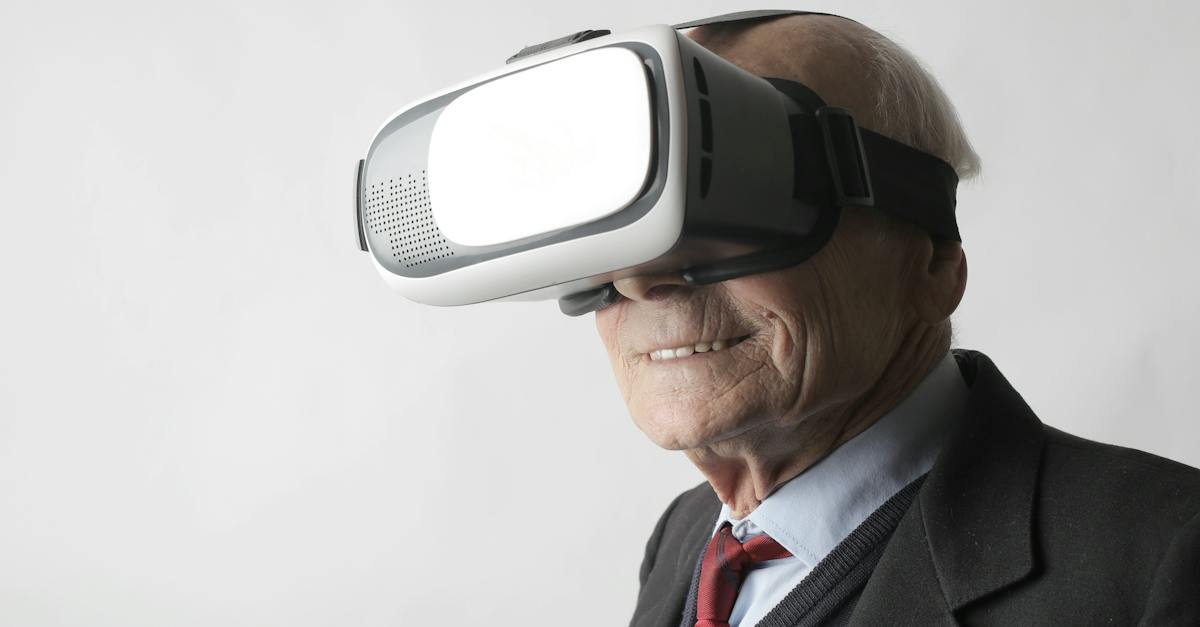This site contains affiliate links to products. I may receive a commission for purchases made through these links.
I’ve always been fascinated by the night sky. The stars, the planets, the vastness of it all. But let’s face it, not everyone has access to a top-notch telescope or a clear night sky. That’s where Virtual Reality (VR) steps in. With the emergence of VR technology, we can now explore the cosmos like never before, right from the comfort of our homes!
This is the era of immersive learning, and VR apps are leading the charge. Especially in the field of astronomy, they’re transforming the way we understand and interact with the universe. Whether it’s taking a virtual tour of the International Space Station or journeying through the cosmos, these apps are making astronomy accessible to everyone.
Benefits of Virtual Reality in Astronomy
Virtual Reality’s role in the field of astronomy is revolutionary. It’s no surprise that more and more people are embracing this technology due to its unimaginable benefits.
To start off, VR in astronomy offers immersive learning experiences. It’s like embarking on a spacetime journey. You can explore different galaxies, touch the stars, and get a close-up view of planets. This hands-on experience makes learning more engaging and fun. It’s exactly what the traditional classroom setup lacks and what VR delivers in abundance.
Next, it’s a tool for democratizing knowledge. You don’t need to have access to a high-end telescope or live in a location with a clear night sky. Your VR headset is your personal observatory. It enables you to delve into the world of constellations, comets, and galaxies regardless of your physical location.
Another significant advantage of VR is its ability to visualize abstract concepts. For instance, understanding the vastness of space or visualizing the structure of a black hole is understandably complicated. With VR, these challenging concepts become easier to comprehend as it provides a visually rich representation of such abstract ideas.
Finally, it’s a boon for accessibility. People with physical disabilities or those who live in remote areas can also immerse themselves in the wonders of the universe. The retail availability of VR headsets and apps ensures that everyone can participate in this learning journey without observable barriers.
The following table condenses the main benefits of VR in Astronomy mentioned above:
| Benefits | Description |
|---|---|
| Immersive learning experiences | Makes learning engaging and fun through hands-on experience. |
| Democratizing knowledge | Provides access to astronomy for individuals who lack significant resources. |
| Visualization | Simplifies the understanding of abstract concepts and ideas. |
| Accessibility | Allows individuals with physical disabilities or from remote areas to explore the universe. |
Reflecting on these aspects, it’s clear that VR’s impact in the field of astronomy extends far beyond pure entertainment. It offers real educational value, lowers barriers to access, and presents a new way of understanding complex astronomical concepts.
Exploring the Universe in Virtual Reality
Diving directly into the cosmos might sound like pure science fiction, but it’s quickly turning into reality with VR technology. Let’s delve deeper into the world of VR astronomy apps that are turning heads.
Sky-lovers are finding a whole new galaxy of features in VR astronomy apps. These apps offer a unique and unrestricted view of celestial bodies that you can’t get from a simple telescope. Imagine floating through the cosmos, having Saturn’s rings at your fingertips, or standing on the surface of Mars – all of this is possible with VR astronomy.
There are several noteworthy VR astronomy apps available now. Let’s take a look at some of them:
- Titans of Space: This popular educational VR app takes you on a guided tour of the Solar System and beyond. You’re not just onlooker here, you’re an active participant observing the mysteries of the universe up close.
- Universe Sandbox: For those who desire more control over their astral journeys, Universe Sandbox lets you manipulate the universe at your will. Create, destroy, and observe stellar phenomena to understand how they occur.
- Mission: ISS: This app lets you explore the life of astronauts aboard the International Space Station. It’s not strictly astronomy but it gives a rare perspective on space exploration.
These are just a few of the many options available for astronomical exploration in VR. The beauty of it all is that you don’t even need to be an astronaut or own expensive equipment to explore the universe. Right from your living room, VR brings the universe to you, offering a whole new way of learning and visualizing complex astronomical concepts.
Popular Virtual Reality Apps for Astronomy
Stepping into the realm of VR astronomy, three standout apps rise in popularity. They aren’t just well-liked, they’re also pioneers in the field.
Titans of Space is one such app that offers an across-the-board tour of our own solar system. Have you ever wondered how it feels to float in space and gaze upon the planets up-close? An experience like no other, Titans of Space gives you the chance to do exactly that.
On the other hand, Universe Sandbox ventures beyond our solar system, enabling players to manipulate entire galaxies. Want to witness the Big Bang? Or, feel the might of a supernova explosion? Universe Sandbox provides a digital playground where everything in the cosmos is at your fingertips. It’s learning, experimenting, and marveling at the beauty of the universe all at the same time.
Then there’s Mission:ISS. Unlike the previous two apps, Mission:ISS throws you into the role of an astronaut. It’s a completely immersive experience allowing you to navigate through the international space station, perform tasks, and even do spacewalks. Your dreams of being an astronaut are merely a headset away.
Over the past few years, there’s been an impressive surge in VR users. Let’s take a look at the growth trend:
| Year | Number of VR users (in millions) |
|---|---|
| 2018 | 85.0 |
| 2019 | 106.3 |
| 2020 | 135.1 |
Do you wonder why there’s such an uptick in the use of VR mainly in the field of education? The answer lies in the fact that VR offers immersive learning experiences that traditional education often fails to deliver.
The rise of these apps attests to the transformative potential of VR in astronomy. It’s not just about stargazing anymore, it’s about diving deep into the cosmos and experiencing space itself.
Virtual Reality Telescope Simulations
Right after experiencing the vastness of our cosmos with Titans of Space, tampering with galaxies in Universe Sandbox, and working as an astronaut in Mission:ISS, it’s time to take a closer look at the stars. Virtual Reality Telescope Simulations have come a long way to immerse us further into the astronomical world.
With VR telescope in hand, millions of users have peered into the depths of the universe without leaving their homes. Imagine being able to gaze at neighboring galaxies, observe celestial bodies in startling detail, or even witness the explosion of a supernova. All these experiences are made possible by VR astronomy apps that turn theoretical knowledge into an engaging journey through the cosmos.
There are several impressive apps in this category. Stellarium Mobile Sky Map is one such app that accurately displays the night sky, matching constellations and stars to their actual position in real time. Likewise, SkyPortal Mobile App provides an AR experience where users can spot, trace, and learn about constellations in their surrounding night scape.
Then we have StarTracker VR, a top-rated app that offers an immersive sky-gazing experience. Users can explore a vault of over 8000 stars, all of which are reachable in the blink of an eye. The use of real images captured by Hubble Space Telescope adds an element of reality, making the user feel like they’ve been teleported to a different part of the universe.
Below is a summary table of these VR telescope apps with their unique features:
| App Name | Features |
|---|---|
| Stellarium Mobile Sky Map | Accurate display of the night sky, real-time positioning |
| SkyPortal Mobile App | AR-powered constellation spotting and learning |
| StarTracker VR | Access to over 8000 stars, real images from the Hubble Space Telescope |
Innovations like these are establishing CPs as invaluable tools in the field of space education, promising a bright future for VR in astronomy.
Virtual Reality and Space Education
As we gaze at the boundless sky, it’s easy to forget how much VR in astronomy is revolutionizing space education. This immersive technology has profoundly reshaped our methods of exploring and understanding the universe. Let’s dive a bit deeper into how VR apps bring the cosmos right to our fingertips.
One of the great advantages of VR is the facilitation of hands-on learning. Instead of merely reading about the planets and galaxies, students can now virtually fly through them. This experiential form of learning is revolutionizing how astronomy is taught. There’s a fantastic variety of space simulations out there that are suitable for different ages and learning levels.
The relationship between space education and virtual reality isn’t a one-way street. While VR helps students grasp the vastness of the universe, it also serves as a training tool for astronauts. For example, astronauts use VR to simulate challenging scenarios before they’re launched into space. VR training has shown impressive results: increased training efficiency, greater retention, and faster reaction times.
Another fundamental aspect of VR in space education is its potential for distance learning. With VR, we can break the constraints of geography. Students around the world can have the same immersive, interactive experience as those located near top astronomy institutions. It’s an inclusive approach that allows for the widest possible dissemination of knowledge.
Here’s a snapshot of how VR is revolutionizing space education:
- Hands-on learning
- Training tool for astronauts
- Facilitates distance learning
So what’s next? They sky’s the limit. As this technology advances, so will our ability to explore and comprehend the cosmos. While we marvel at our current capabilities, we can only imagine what lies ahead in the intersection of VR and space education.
Conclusion
We’ve journeyed through the cosmos, from the comfort of our own homes, thanks to VR in astronomy. We’ve seen firsthand how this technology is revolutionizing space education, transforming the way we learn and explore. VR apps have opened up galaxies for exploration, offering hands-on learning experiences. They’ve erased geographical boundaries, allowing students worldwide to dive into immersive space education. Astronauts, too, are benefiting, using VR for invaluable mission training. It’s clear that the potential of VR in space education and exploration is boundless. As we continue to embrace this technology, who knows what celestial secrets we’ll uncover next? It’s an exciting time to be a part of this digital space age.
Frequently Asked Questions
What is the main impact of Virtual Reality (VR) in space education?
VR has revolutionized space education by enabling hands-on learning experiences. It allows students to virtually explore planets and galaxies, enhancing their understanding of the cosmos.
How does VR serve as a training tool for astronauts?
VR is used to simulate challenging scenarios that astronauts may face during their space missions. This allows for risk-free training and better preparedness for actual space travel.
How does VR in space education facilitate distance learning?
VR facilitates distance learning by breaking geographical constraints. No matter where they are in the world, students can have immersive educational experiences through VR.
What potential does VR have in the field of space education?
The potential of VR in space education is limitless. It not only advances our understanding of the cosmos, but also opens up new avenues for exploration and discovery.



